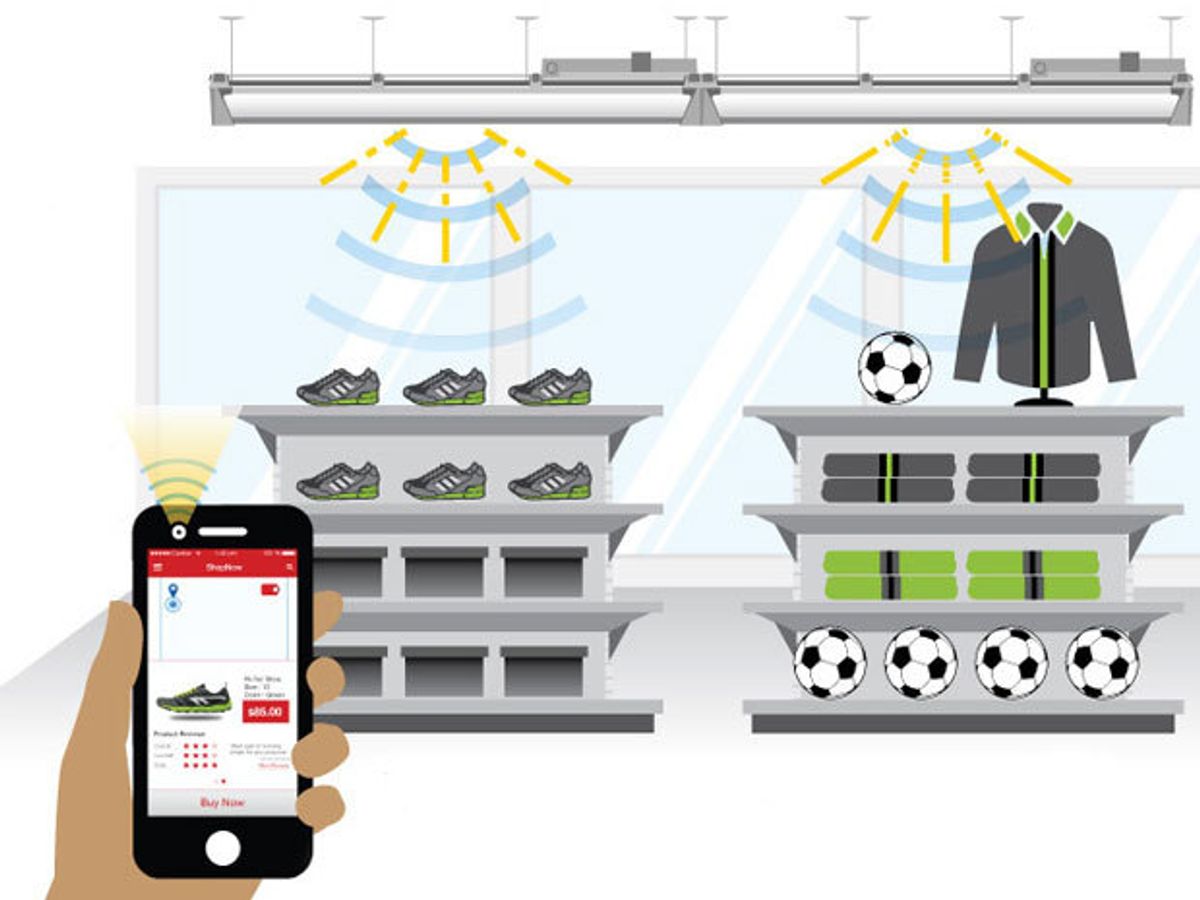Controlling LED light bulbs in your home with a smart phone certainly makes for a cool demo. But lighting companies think they have a more compelling commercial application for smart lighting: retail.
Next week, General Electric and startup company ByteLight will demonstrate a network-connected lighting system for stores at the LightFair industry conference in Las Vegas. The idea is to offer repeat customers personalized offers, perhaps based on their shopping history, as well as maps to find items in stores.
GE will embed chips made by ByteLight in its LED-based overhead lights, the type normally used in offices and big-box stores. The chips will communicate with consumers' smart phones and use sensors to track the direction a person is moving inside a store.
Until now, ByteLight only made a chip that communicated via Visual Light Communications (VLC), which uses light pulses to transmit data. The flickers are too fast to be detected by the human eye, but a smart phone's image sensor can read the signals.
VLC can accurately locate a person to within less than a meter, but it can't "talk" to a phone that's inside a pocket or purse because the link requires line of sight.
The technology demonstrated with GE will include a chip that can communicate via both VLC and Bluetooth Low Energy, or BLE. The Bluetooth radio signal can alert a customer to a special offer, inducing him or her to pull out the handset to read the come-on. Once the phone is out, it can can communicate using VLC, a company representative explained.
At this point, the companies do not have any commercial customers, but will be targeting big-box retailers, such as Walmart, which last month said it will upgrade to GE's LED lights.
Upgrading to efficient LED lighting can save companies on energy bills. But increasingly, LED companies are pitching the benefits of electronic controls. For example, by adding sensors for daylighting to overhead office lights, LED lights can dim automatically and save more energy.
Connected LED lighting allows store owners or, say, museums to go further by using lights as network access points that consumers connect to. "The value proposition for LED lighting is becoming less about elimination and more about innovative applications and services that digital light enables," said ByteLight CEO Dan Ryan in a statement.
Apple has already started using its iBeacon technology, which uses iPads and other devices to communicate with consumer smart phones using Bluetooth. New York City drugstore chain Duane Reade said earlier this month that it will use iBeacon to offer coupons and other services to shoppers with iPhones.
And earlier this year, Phillips introduced its own VLC-based smart LED lighting system and said it is testing it with retailers.
As light fixtures become more intelligent and potentially track people's movements, they raise privacy concerns. But for consumers who love a special offer, smart lighting could make shopping a new interactive experience.



